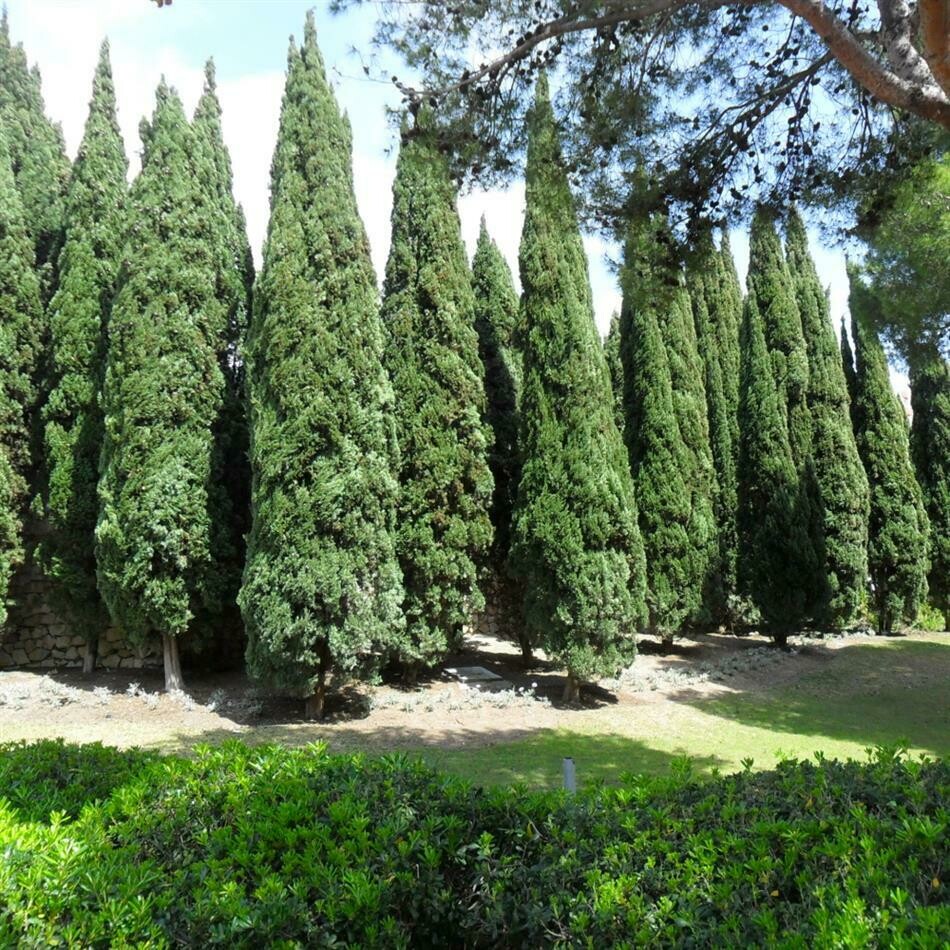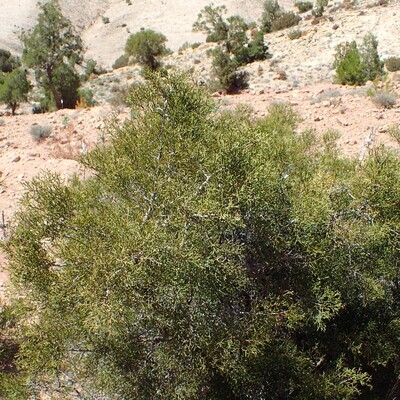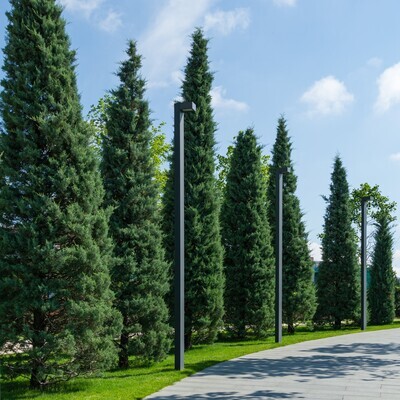jardimseco

Cupressus sempervirens
The Mediterranean Cypress is the classic fastigiate dark green conifer frequently planted in our Mediterranean landscapes. Most trees you see in the Algarve are young, the majority planted in the last 30 years. This is a tree that could grow to 20–25 metres high and live for more than 300 years, some trees are reported to be over 1,000 years old. It's a very tough, fast-growing, long-lived tree, it can tolerate a wide range of soil and climatic conditions such as drought and even temperatures down to -20 C. Its ability to develop an extensive root system and regenerate its foliage, if damaged, gives the tree good fire resistance when exposed to wildfires, a true survivor even in the harshest conditions.
The trees we offer are Cupressus sempervirens and are grown from seed from selected parents (those that resemble the typical Italian Cypress shape), however there will be some variation from plant to plant. This is usually acceptable, and in our opinion desirable, unless where they are planted in a hedge or shelter belt, one horizontal type tree amongst many pyramid type trees will stick out like a sore thumb. When young all the various types can be difficult to tell apart, but if you see seed cones on a small tree, it is likely to be of grafted origin as the seed grown trees do not produce cones for about 10–12 years.
Other forms of Italian Cypress
Although the common names are geographical, such as the Italian cypress, Tuscan cypress, Persian cypress, to name a few, it is native to the whole eastern mediterranean basin, through to western Syria, Israel and western Jordan. The species name sempervirens comes from the Latin for 'evergreen' and there are two "types" or forms of the tree, fastigiate and horizontal. By horizontal, we mean the typical mountain Cypress form, with a wider triangular crown. Science suggests that the horizontal form will predate human activity, whereas the fastigiate form has a horticultural origin dating to early historic or prehistoric times. There are no subspecies or true varieties and the vast majority of the trees in cultivation are selected cultivars with a fastigiate crown, with erect branches forming a narrow to very narrow crown, often less than a tenth as wide as the tree is tall. C. sempervirens is the true species form, and all other forms are found in the old Cultivar Group - Cupressus sempervirens. var. pyramidalis (syn. var. fastigiata, var. Stricta, var. Totem, etc). all with the familiar tall pencil-like form.
We also offer the cloned 'pyramidalis' forms as 'Totem' and 'Stricta' - these will be propagated by vegetative cuttings and/or grafted onto selected Cupressus rootstock, and they are clones of the parent tree. They should not be variable, unless their parentage is accidentally mixed up somewhere in their production. Having said all this, many of the typical 'Tuscan Cypress' forms you see are in fact pruned regularly and the branches are often tied back into the main trunk to control their shape, they don't just come out of the box like this, a lot of work goes into trimming them up, both in the landscape and in the nursery production.
Are they fireproof?
How to use our online shop
-
You can make an order by selecting plants with quantities and putting them in your Shopping Bag.
-
By placing an order you are not obligated to purchase the plants online and you will not be asked for any payment at this stage.
-
We will confirm prices, availability and delivery/collection dates with you by email.
-
Only when all the details of your order are agreed, will we send you an agreed Factura/Invoice and request payment from you.
-
Once an order is agreed we require a 50% payment to secure the plants. Plants in the shopping basket are not reserved until an order is placed.
-
Availability - the store contains 3 availability categories
-
Plants ready for despatch, collection within 14 days
-
Plants we have but they are still growing into their containers. These are offered for reservation and will be released once they are ready. An estimated date for their availability is given.
-
Plants that we only hold a limited stock of, or only propagate occasionally or on demand. This also includes plants we are going to propagate in the near future.
-
Read more on our plant availability and advance orders here


